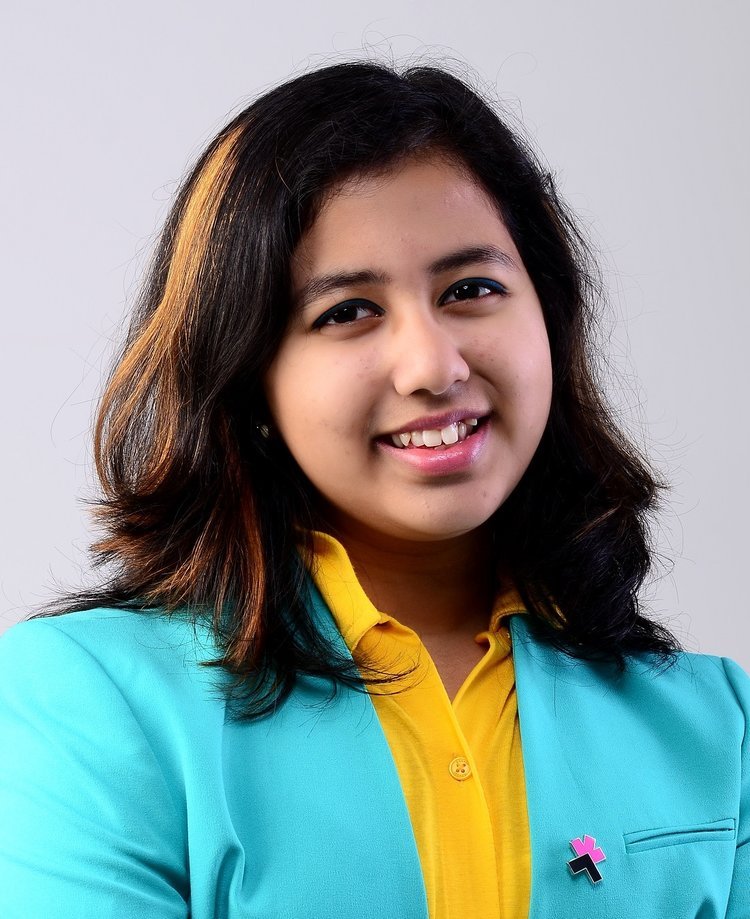Kehkashan Basu, Founder, Green Hope Foundation
Kehkashan Basu is the founder of the Green Hope Foundation, which is focused on giving a voice to children and youth in a discussion that arguably impacts them the most – the future. She is passionate about sustainability, inter and intragenerational equality, girls and women’s rights, and climate justice. Speaking at several United Nations and international summits, Kehkashan continues to share her message far and wide encouraging today’s youth to participate in and engage in a world that is building their future.
She has received international recognition including for 2016 International Children’s Peace Prize, the 2017 Turner Prize for Social Change and the 2017 National Energy Globe Award, and was elected Global Coordination for the United Nations Environment Programme – achieving all of this before she’s even reached the age of 18.
Kekhashan has spoken at several global conferences, such as COP23, the 34th Session of the United Nations Human Rights Council in Geneva, the World Bank Youth Forum, the European Parliament’s session on gender equality, HLPF sessions at UN New York, the 2018 Globe Forum in Vancouver and most recently at the 2018 St. Louis Climate Summit.
Finding Environmental Inspiration
Discussions around environmentalism and sustainability are often complex and uniquely far-reaching. From corporate sustainability to climate change policy, timelines can often seem far away into the future; it is in this context that Kekhashan Basu’s efforts to advocate for children and youth in the environmental conversation is understandably important. Kehkashan’s own call to action struck her at a young age – when she was 8 years old, she saw a dead bird enveloped in plastic, and she knew there was something terribly wrong. It stood in stark contrast to the environmentally-sustainable life she lived with her parents in the UAE, and inspired her to engage those outside her family to pursue their own environmental goals. She planted her first tree on her 8th birthday and hasn’t looked back.
The more she learned, through lectures and engaging the environmental movement, the more she understood the opportunity for action. A pervasive belief that something or someone else would emerge to fix environmental issues inspired her to be that force – so she started personally engaging her community by going to different shops and restaurants, encouraging awareness and action among shop owners to minimize their environmental footprints by recycling and reducing their waste. In a couple of months, she reached out to hundreds of people, and was glad to find that many people were looking for a way to make a difference. Unsurprisingly, her tenacity and passion earned her recognition in 2011 by the United Nations Environmental Program, and she was invited to attend their International Children and Youth conference on Sustainability in Indonesia, where she made her first step into the international arena.
From Local to Global: The Green Hope Foundation
Kehkashan began making regular appearances at various conferences and summits, challenging and encouraging people to be an environmental force in their own communities, and to make a difference in their own way. She has received a great deal of recognition for her work, including winning the Solar Pioneer award, 2015 Non-Resident Indian of the Year, the International Diana award, the Korea Green Foundation award in 2012, and was elected for a 2-year term as the United Nations Environmental Programme Global Coordinator Children & Youth, becoming the youngest person to ever be elected to the position.
In the midst of all this, Kehkashan had attended the Rio+20 Earth Summit in Brazil 2012. It was there that she realized that at a conference with over 50,000 delegates, there were only a handful of children present. The whole purpose of the conference to discuss the potential for our global future – and somehow the voice of the future was all but absent. And the same way she took it upon herself to engage her local community, Kekhashan recognized the opportunity to change that. So when she returned to Dubai, she started the Green Hope Foundation, which was designed to specifically give young people a platform to take action and to be part of the sustainable future and its continued discussions. Her message spread through word of mouth, and by 2012, she was a global coordinator. As with the restaurant and shop owners in her community, children and youth were excited for an opportunity to make a difference. They brought enthusiasm and passion that has made the Green Hope Foundation the success that it is today.
Community through Art and Education
The diversity of Kehkashan’s environmental experience is broad, so we asked to talk a little about the different types of activities put together by Green Hope. For example, environmental workshops can use art, music, dance, and drama to spread awareness. Workshops focus on breakout sessions, eco fashion shows, and music and performance; she emphasizes that art is often one of the best ways to bridge communication barriers between a wide array of audiences, and are broadly applicable – from India to Nepal and Oman, she has found success and engagement in these workshops. Green Hope also engages in direct conservation activities, such as tree planting, and learning about turtle conservation, as well as more traditional educational engagements in schools and forums. Ultimately the approach is holistic – depending on the audience, Green Hope will gear presentations towards a topic of interest, but always ultimately focuses on the main tenets of the Sustainable Development Goals set by the United Nations (reducing poverty, encouraging quality education, gender equality, renewable energy, sustainable cities, and climate action), and in encouraging direct youth engagement.
North America and Beyond
In August 2016, Kehkashan arrived in Canada. She’s already setting new goals for the next chapter in her young life – she wants to pursue a university education in North America and start a Green Hope Chapter here as well. She finds Toronto familiar in its diversity, something that she was used to seeing as a child growing up in UAE. When asked about some highlights so far, Kehkashan gushed about how cool it was that the rock band U2 had featured her in an Amazing Women presentation during one of their concerts, which we think is pretty cool, too.
Since her arrival in North America, she’s expanded the breadth of her foundation to Children and Youth programs in schools. She’s spoken to over 10,000 children in Amsterdam, continued Green Hope efforts in the Middle East countries, India, Nepal and Malaysia, and continues to encourage direct participation and engagement of the youth who stand to inherit the planet and its future. One of Green Hope’s biggest projects happened in January, where 5 teens travelled to a Syrian refugee camp. It was an eye-opening experience for them – and while it was difficult, they also connected with some of the 600 children in the refugee camp, by running environmental workshops.
Encouraging the Next Generation
With her unique perspective, we asked Kehkashan to share some advice for any young person who is looking to make a difference, or to begin engaging in the environmental movement. Without hesitation, she says that they are going to be naysayers – and that youth and adults alike should see those challenges as direct opportunities to “prove them wrong”. She encourages kids and teens to reach out and connect with their friends and family as well.
Further, environmental, gender, and social justice issues are neither too small or too separate from a global perspective. People can get involved in a lot of different ways – it will require efforts from both the developed and developing world to achieve sustainability and connecting with these different communities is a good place to start. For example, rural and urban areas face different kinds of challenges, but they are not disconnected – from the city to the countryside, clean water, breathable air, and empowering girls and youth to take part in their communities are shared goals. Certainly, leading by example, Kekhashan knows that with more youth engagement, the more inspiration there’ll be: if kids see other kids participating in the conversation, they may find the courage in their own voices, too.

